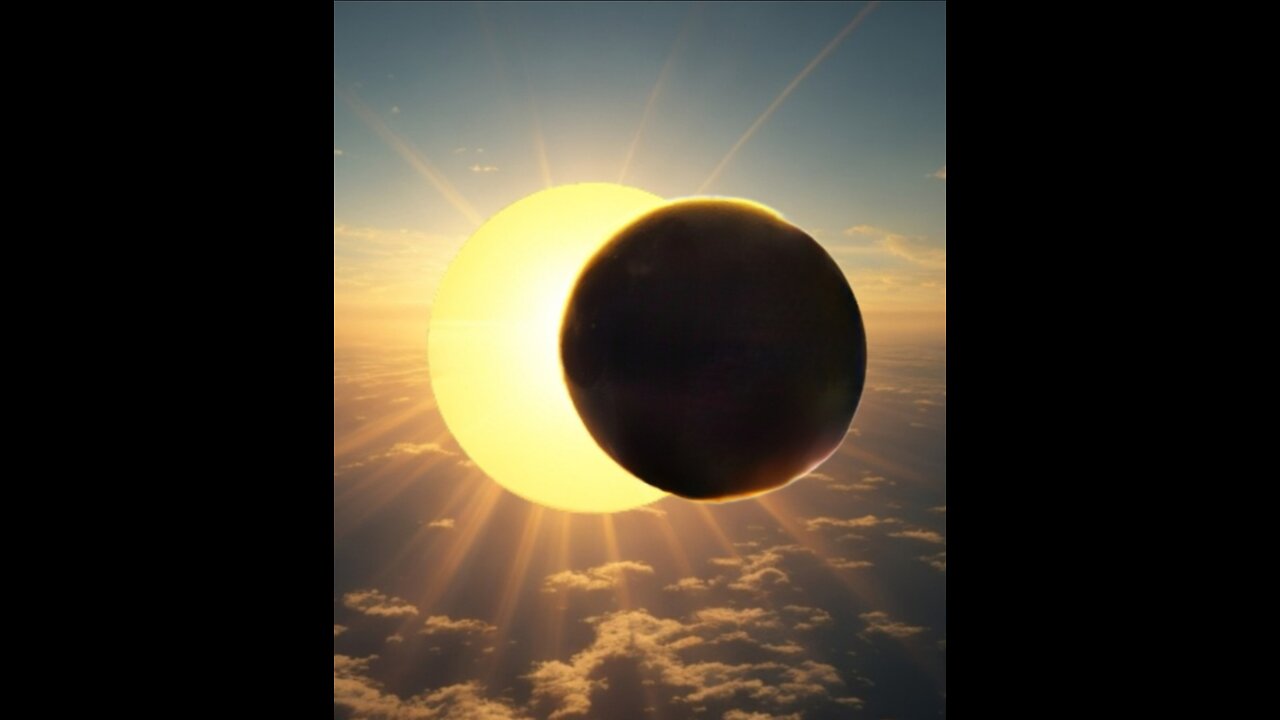Premium Only Content

Witness an ASTRONOMICAL PHENOMENON! Total Solar Eclipse
Witness an ASTRONOMICAL PHENOMENON! Total Solar Eclipse
A Total Solar Eclipse will grace the skies over North America on Monday, one of the most hotly anticipated sky-watching events in recent years.
Weather permitting, millions of people in Mexico, 15 U.S. states and eastern Canada will have the chance to see the moon slip between Earth and sun, temporarily blocking the sun’s light.The total solar eclipse will be visible along a “path of totality” that measures more than 100 miles wide and extends across the continent. Along that path, the moon will fully obscure the sun, causing afternoon skies to darken for a few minutes.
Follow live updates on the solar eclipse
In all other parts of the continental U.S., a partial solar eclipse will be visible, with the moon appearing to take a bite out of the sun. Exactly how big a bite depends on the location.
The first spot in North America that will experience totality on Monday is on Mexico’s Pacific coast at around 11:07 a.m. PT, according to NASA.
After moving northeast across Mexico, the eclipse’s path travels through Texas, Oklahoma, Arkansas, Missouri, Illinois, Kentucky, Indiana, Ohio, Pennsylvania, New York, Vermont, New Hampshire and Maine. Slivers of Michigan and Tennessee will also be able to witness totality if conditions are clear.
In Canada, the eclipse will be visible in parts of southern Ontario, Quebec, New Brunswick, Prince Edward Island and Cape Breton, at the eastern end of Nova Scotia.
The timing of the eclipse and the duration of totality varies by location. Most places will experience around 2 minutes of darkness, but the longest periods of totality are typically in the center of the eclipse’s path.
SPACE
Live updates: Millions gather to catch a view of the total solar eclipse crossing North America
This year, the longest stretch of totality will last 4 minutes and 28 seconds in an area northwest of Torreón, Mexico.
The #moon covers the #sun during a #totalsolareclipse in Cerulean, Ky.
The moon covers the sun during a total solar eclipse in Cerulean, Ky., on Aug. 21, 2017.Timothy D. Easley / AP file
Below is a list of timings for some U.S. cities along the path of totality, according to NASA.
Dallas: Partial eclipse begins at 12:23 p.m. CT and totality at 1:40 p.m. CT.
Idabel, Oklahoma: Partial eclipse begins at 12:28 p.m. CT and totality at 1:45 p.m. CT.
Little Rock, Arkansas: Partial eclipse begins at 12:33 p.m. CT and totality at 1:51 p.m. CT.
Poplar Bluff, Missouri: #Partial eclipse begins at 12:39 p.m. CT and totality at 1:56 p.m. CT.
Paducah, Kentucky: Partial eclipse begins at 12:42 p.m. CT and totality at 2:00 p.m. CT.
Carbondale, Illinois: Partial eclipse begins at 12:42 p.m. CT and totality at 1:59 p.m. CT.
Evansville, Indiana: Partial eclipse begins at 12:45 p.m. CT and totality at 2:02 p.m. CT.
Cleveland: Partial eclipse begins at 1:59 p.m. ET and totality at 3:13 p.m.
Erie, Pennsylvania: Partial eclipse begins at 2:02 p.m. ET and totality at 3:16 p.m. ET.
Buffalo, New York: Partial eclipse begins at 2:04 p.m. ET and totality at 3:18 p.m.
Burlington, Vermont: Partial #eclipse begins at 2:14 p.m. ET and totality at 3:26 p.m. ET.
Lancaster, New Hampshire: Partial eclipse begins at 2:16 p.m. ET and totality at 3:27 p.m.
Caribou, Maine: Partial #eclipse begins at 2:22 p.m. ET and #totality at 3:32 p.m. ET.
Other resources can also help you figure out when the various phases of the eclipse will be visible where you live.
https://www.nbcnews.com/news/amp/rcna146131
If you plan to watch the #celestial event, remember that it’s never safe to look directly at the sun, including through binoculars, telescopes or camera lenses. Special eclipse glasses are required to safely view solar eclipses and prevent permanent eye damage.
#tiffanyscontent #totaleclipse #weather #sky
https://www.fox5ny.com/news/2024-solar-eclipse-path-and-times-ny
-
 1:25:52
1:25:52
TruthStream with Joe and Scott
2 days agoSG Sits Down w/ LT From "And We Know": An 80K FT View of Humanity's Great Awakening from 8/22/2025
10.1K16 -
 15:54
15:54
Lacey Mae ASMR
9 hours agoASMR For Sleep in 15 Minutes!
352 -
 3:16:38
3:16:38
Price of Reason
10 hours agoTrump FIRES Fed Governor Lisa Cook! Cracker Barrel CRISIS Continues! James Gunn DCU Woes! Gamescon!
93.5K7 -
 2:25:01
2:25:01
FreshandFit
5 hours agoTyreek Hill Pays Ex Wife $1 Million in Ongoing Fees From Divorce?!
26.1K3 -
 2:03:46
2:03:46
Inverted World Live
7 hours agoHaunted Dolls Hack Amazon Alexa | Ep. 98
98.9K2 -
 3:09:53
3:09:53
Laura Loomer
7 hours agoEP140: Loomer EXPOSES Islamification At US State Department
29.8K12 -
 3:05:00
3:05:00
TimcastIRL
7 hours agoTrump Floats Accepting 600,000 Chinese Student Visas, MAGA Uproar | Timcast IRL
203K140 -
 8:44:47
8:44:47
SpartakusLIVE
12 hours ago$20,000 Hide and Seek Tourney w/ Stonemountain64 || #1 Rat wins the BIG CHEESE
66.5K -
 2:34:02
2:34:02
Barry Cunningham
8 hours agoLISA COOK | ADAM SCHIFF | LETITIA JAMES | ARE THEY BEING SACRIFICED BY THE DEEP STATE?
97.1K54 -
 1:36:19
1:36:19
Flyover Conservatives
16 hours agoOnly 17% of Millennials Hit These 5 Adult Milestones—Why?; What If Childhood Trauma Is Behind Your Health Problems? - Dr. Troy Spurrill | FOC Show
37.1K4